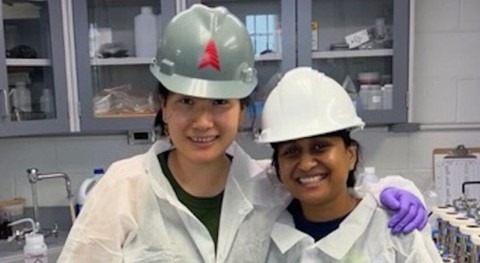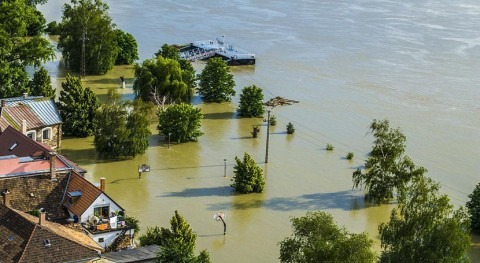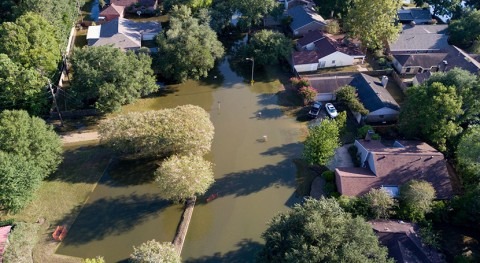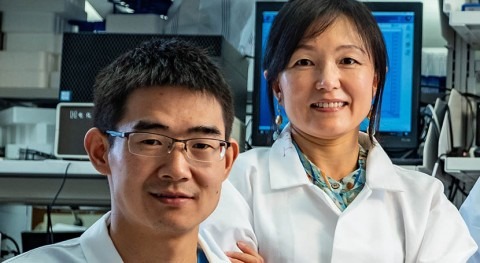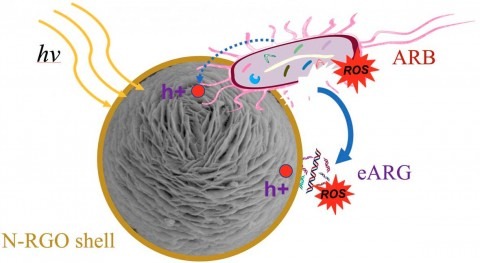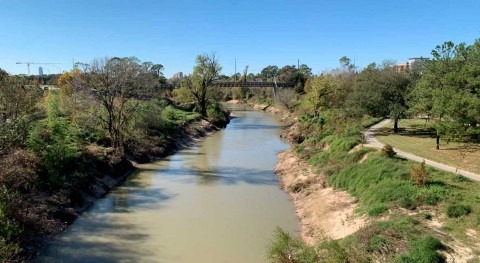Creating a hydrogen economy is no small task, but Rice University engineers have discovered a method that could make oxygen evolution catalysis in acids, one of the most challenging topics in water electrolysis for producing clean hydrogen fuels, more economical and practical.
The lab of chemical and biomolecular engineer Haotian Wang at Rice’s George R. Brown School of Engineering has replaced rare and expensive iridium with ruthenium, a far more abundant precious metal, as the positive-electrode catalyst in a reactor that splits water into hydrogen and oxygen.
The lab’s successful addition of nickel to ruthenium dioxide (RuO2) resulted in a robust anode catalyst that produced hydrogen from water electrolysis for thousands of hours under ambient conditions.
“There’s huge industry interest in clean hydrogen,” Wang said. “It’s an important energy carrier and also important for chemical fabrication, but its current production contributes a significant portion of carbon emissions in the chemical manufacturing sector globally. We want to produce it in a more sustainable way, and water-splitting using clean electricity is widely recognized as the most promising option.”
Iridium costs roughly eight times more than ruthenium, he said, and it could account for 20% to 40% of the expense in commercial device manufacturing, especially in future large-scale deployments.

A schematic shows the experimental water electrolyzer developed at Rice to use a nickel-doped ruthenium catalyst. Illustration by Zhen-Yu Wu
The process developed by Wang, Rice postdoctoral associate Zhen-Yu Wu and graduate student Feng-Yang Chen, and colleagues at the University of Pittsburgh and the University of Virginia is detailed in Nature Materials.
Water splitting involves the oxygen and hydrogen evolution reactions by which polarized catalysts rearrange water molecules to release oxygen and hydrogen. “Hydrogen is produced by the cathode, which is a negative electrode,” Wu said. “At the same time, it has to balance the charge by oxidizing water to generate oxygen on the anode side."
“The cathode is very stable and not a big problem, but the anode is more prone to corrosion when using an acidic electrolyte,” Chen said. “Commonly used transition metals like manganese, iron, nickel and cobalt get oxidized and dissolve into the electrolyte.
“That’s why the only practical material used in commercial proton exchange membrane water electrolyzers is iridium,” he said. “It’s stable for tens of thousands of hours, but it’s very expensive.”
Setting out to find a replacement, Wang’s lab settled on ruthenium dioxide for its known activity, doping it with nickel, one of several metals tried.
The researchers demonstrated that ultrasmall and highly crystalline RuO2 nanoparticles with nickel dopants, used at the anode, facilitated water-splitting for more than 1,000 hours at a current density of 200 milliamps per square centimeter with negligible degradation.
They tested their anodes against others of pure ruthenium dioxide that catalyzed water electrolysis for a few hundred hours before beginning to decay.
The lab is working to improve its ruthenium catalyst to slot into current industrial processes. “Now that we’ve reached this stability milestone, our challenge is to increase the current density by at least five to 10 times while still maintaining this kind of stability,” Wang said. “This is very challenging, but still possible.”
He sees the need as urgent. “The annual production of iridium won’t help us to produce the amount of hydrogen we need today,” Wang said. “Even using all the iridium globally produced will simply not generate the amount of hydrogen we will need if we want it to be produced via water electrolysis.
“That means we can’t fully rely on iridium,” he said. “We have to develop new catalysts to either reduce its use or eliminate it from the process entirely.”




